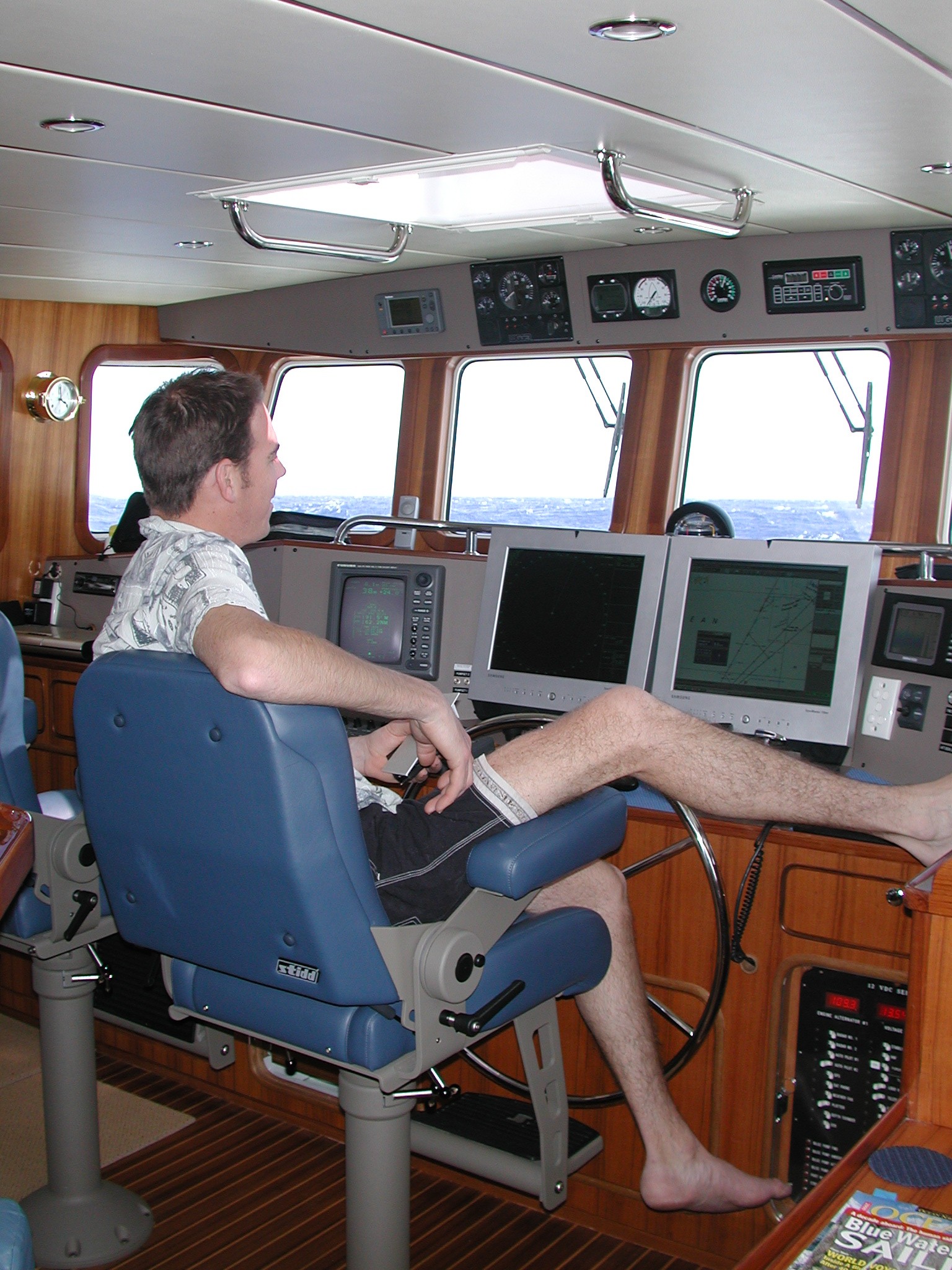One of the major benefits of going on so many different boat trips is that I always learn something new. It is never just routine or same old, same old. Spend time aboard any cruising sailboat or powerboat, each time with different owners and crew, and you learn new ways of doing things.
(BTW, that is my biggest gripe with boat builders, many of whom assume their way of doing things is the best, even though they don't make passages or long coastal trips on their boats. And they certainly NEVER spend quality time aboard boats from a different builder. As a result, they never see how a problem was solved or avoided, or a better way of doing something. That is an issue I found over and over in the recreational boat building industry.)
Anyway, these trips (offshore or even overnight coastal passages) gave me great opportunity to experience different ways for the crew to stand watch, which vary considerably from boat to boat, and crew to crew. The number of people, each person's experience and preferences, special roles aboard, and other considerations go into creating the watch schedule for a particular voyage.
Racing to Bermuda in the '80s. This helmsman was so seasick he could not go below almost the entire race. I smashed my nose the night before when a big wave rolled us and I slipped on the slippery varnished companionway slides. One MD crew member said it was not broken and that I would live...
I've done some single handing over the years, from my early days of cruising on a smaller sailboat (a sweet Bob Perry-designed Baba 30) to a 41-foot power catamaran, which I enjoyed taking one fall from Annapolis down the ICW to Florida. It was fun to do it that way, having to think through the day's needs and routines before shoving off, including meals. It kept up a heightened situational awareness that was immensely satisfying. Being alone on a boat means you do it all. Offshore that translates into many short power naps, while my days on the ICW were dictated by daylight. Up with the sun, and off to bed when the sun goes down. A simple life, really.
Alone on the ICW, headed to Florida. What a grand experience to do it solo just this once. I really appreciated feeling very much in the moment, with total situational awareness. Good to be alive.
On the other hand, I have crewed on big boats with six or more, most recently on a trip from Newport to Bermuda aboard a superb sea boat, a lovely Camper Nicholson 83, complete with captain, deck hand, and chef. The six of us standing watch split into two-person watches at three-hour intervals. The relatively short trip worked out just fine.
The majority of my passages, however, have been with a crew of four (at least initially), whether on a fully equipped sailboat or ocean-crossing motorboat. Assuming each person has enough experience, there are many ways to set a watch schedule, and many noted sailors have written on watches developed by the early seafarers. There is the Swedish watch system, staggered watches of two people, individual rotation where a new person comes onto a three-person watch every hour, and others. John Rousmaniere wrote a piece that touches on some of these:
http://www.sailnet.com/forums/her-sailnet-articles/20997-art-science-standing-watch.html
Bob Frantz, an experienced sailor who circumnavigated with his son a few years ago on a Hallberg-Rassey 46, told me he found three hours to be a good length to stay sharp, but four hours better for getting enough sleep. That is true. And the Ocean Cruising Club publishes other watch suggestions that explore the balance between staying alert and getting enough rest.
But now I would like to introduce a watch schedule that I found to be the one of the best of all variations. It seems to be an ideal watch system, yet no one I know is familiar with it. There are several reasons why I like this system. Assuming four people are healthy and experienced enough to stand solo watches, this system allows for one person to get a full night off, and most of a day (all but three hours), so they can enjoy a full night of sleep and have plenty of personal time. For a four-person crew, that means a day and night off every four days. That is pure luxury for a small crew.
This system also varies each person's schedule throughout the 24-hour period, and the rotation breaks up the tedium and inevitable monotony of a fixed watch schedule. Variety is a good thing on a boat, and when you are on a passage longer than a few days, it is a marvelous thing.
Consider the following crew of four: Susan, Mark, Peggy, and Bill. Each can stand watch, knows the boat well enough, and can handle the watch tasks, such as engine room checks, sail and rigging inspection, safe navigation, and keeping an eye out for other vessels. The schedule will look something like this:
Day 1 - Susan Off
0000-0300 Mark
0300-0600 Peggy
0600-0900 Bill
0900-1200 Mark
1200-1500 Peggy
1500-1800 Susan
1800-2100 Bill
2100-2400 Mark
Day 2 - Bill Off
0000-0300 Peggy
0300-0600 Susan
0600-0900 Mark
0900-1200 Peggy
1200-1500 Susan
1500-1800 Bill
1800-2100 Mark
2100-2400 Peggy
Day 3 - Mark Off
0000-0300 Susan
0300-0600 Bill
0600-0900 Peggy
0900-1200 Susan
1200-1500 Bill
1500-1800 Mark
1800-2100 Peggy
2100-2400 Susan
Day 4 - Peggy Off
0000-0300 Bill
0300-0600 Mark
0600-0900 Susan
0900-1200 Bill
1200-1500 Mark
1500-1800 Peggy
1800-2100 Susan
2100-2400 Bill
On a longer passage, this watch system proves itself by giving each crew member plenty of time for rest, personal space, and a chance to do their own thing, whether it is reading, writing, embroidery, music, or yoga. It keeps each person from devolving into a zombie. It works.











